I went over to Atlanta a few hours early last Tuesday, before dinner and the Josh Ritter concert, planning to do some exploring in the High Art Museum. I have never visited the High during my 21½ years of living in the Southeast – go figure! – so it seemed about time. I got there at 2:00 (exactly at 2:00, according to my ticket stub/sticker).
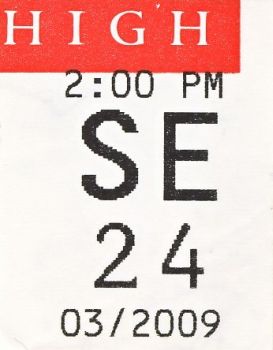
I was holding my BlackBerry and a notebook, true geek that I am, and the fellow who sold me my admission ticket told me I’d need a photo pass to “use that camera.” I exposed it as a cell phone, not a camera, and turned to continue on my way. But then I paused, remembering that I could indeed take pictures with the BlackBerry. So I stopped at the security desk and acquired a photo pass.
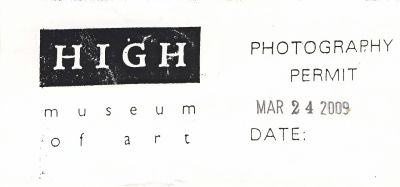
Then I tried to absorb three buildings full of art in three hours, and took a small handful of pics along the way. Photography wasn’t allowed in the main exhibitions (The Louvre Masterpiece and The Chinese Terra Cotta Army), so I limited my snapping to the “green” building where a lot of the permanent holdings are displayed. I’ll tell you right now that I was supremely disappointed when I discovered I had used up all of the available space on my BlackBerry before I got to the crazy Howard Finster room…there will be a next time, for sure!
This building reminded me quite a bit of the Guggenheim Museum in New York, with its ramps encircling the central atrium on the way to each floor. The big difference here is that the High atrium is ¼ of a circle, so the graceful, rising circular ramps of the Guggenheim are replaced by graceful, rising zig-zag ramps.
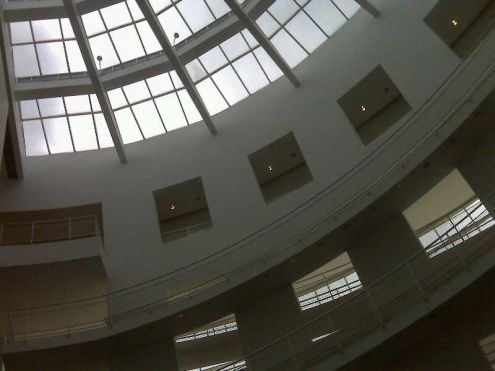
(photo: spitballarmy.com)
I went straight to the European floor and was greeted at the top of the ramp by this mesmerizing piece of sculpture. I must have examined it for five minutes, maybe more, trying to figure out how the artist was able to create the illusion of a thin veil, using stone. It still baffles me.
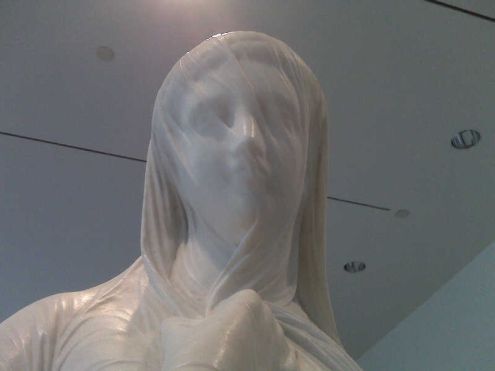
(photo: spitballarmy.com)
On the next floor, this early-American carving, made from yellow pine from Alabama (and, I assume, carved in Alabama), caught my eye. It looks like stone.
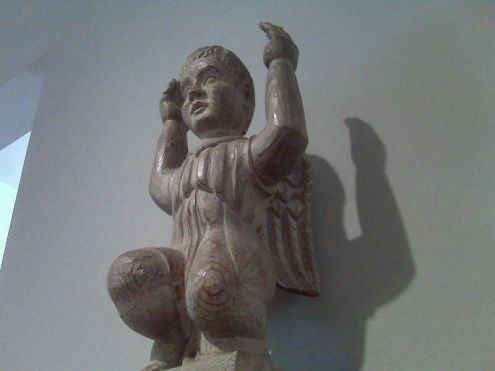
(photo: spitballarmy.com)
There is a very sizable section of the museum devoted to furniture, and several examples of vintage Stickley furniture from the Arts and Crafts period. There also is a healthy representation of Frank Lloyd Wright design in the High, including this fascinating desk. The desk was designed by Wright to be placed in the Johnson Wax Building (a building he designed) in Racine, Wisconsin. Merely by looking at it, I couldn’t decide if this desk would be a comfortable working space. I know from experience that some of the furniture from that era takes getting used to, physically, as I have some reproductions in my house…you don’t just come home and plop down on a Stickley settle, for instance, as you might do on a cozy overstuffed sofa. Anyway, the desk and chair’s comfort levels remain a mystery, for I didn’t want to set off any alarms by trying them out for size. I think that metal half-moon hanging under the desk on the left is a wastecan.
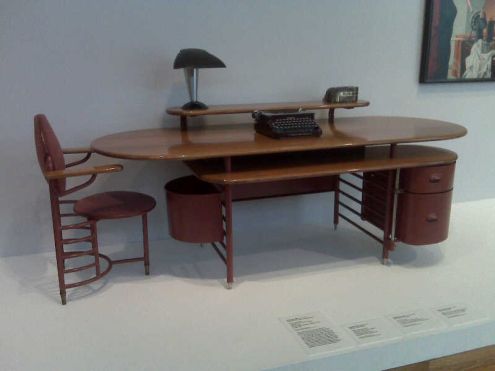
(photo: spitballarmy.com)
Below is a picture of the interior of the aforementioned Johnson Wax Building. You can see how the Frank Lloyd Wright desks are used there.
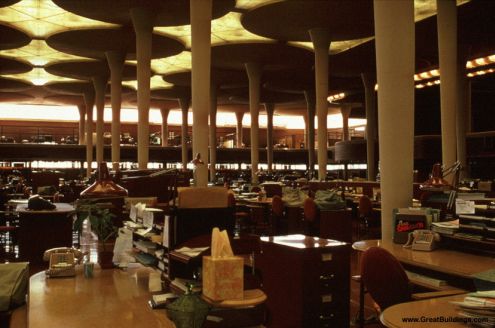
(photo: taken by Johnson Architectural Images, AJ1506. © Artifice, Inc.;
posted on GreatBuildings.com)
More Frank Lloyd Wright, of course. Here is an example of one of his stained glass windows. It isn’t as colorful or lively as the Coonley Playhouse windows, for example, but the American flag insert is a nice touch, indeed.
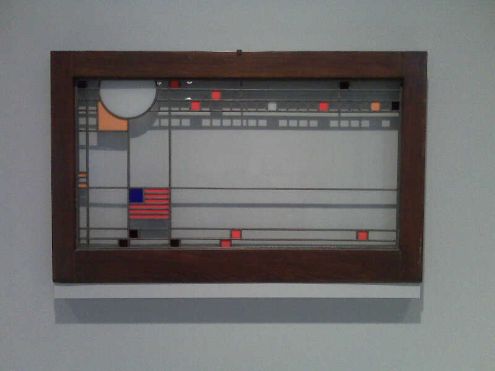
(photo: spitballarmy.com)
This chrome-armed chair was another piece from which I just couldn’t tear myself away. Design-wise, it’s right there on the line between FLW and Edward Hopper: simple, sleek, curving, inviting, muted. I really, really dig this chair. It didn’t hurt that it was right next to yet another Frank Lloyd Wright chair (see the yellow seat immediately behind it). I idiotically forgot to note who the designer of this chair was…anyone?! The curved wooden armpads are a classy touch (I don’t believe they are made from a synthetic material).
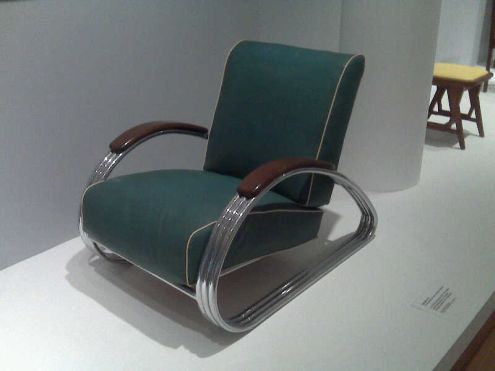
(photo: spitballarmy.com)
The High Museum also has a wonderful folk art collection, highlighted by a Howard Finster room and a couple of Thornton Dial pieces (one day I’ll figure out why Dial’s work is so acclaimed, but I’m on the outside of that club now). There are also some huge pieces of contemporary geometric sculpture that would span half the width of my house, at least. I also enjoyed a photographic exhibit of urban and rural Chinese landscapes that was funded by an trust given to the High by Elton John. Elton John is an Atlanta resident and, apparently, quite the avid photo collector himself, and has provided the Museum with monies that allow them to acquire important photographic pieces.


2 responses so far ↓
1 Jonathan Haley // Mar 31, 2009 at 4:54 PM
I went to the High Museum for the first time in January and I loved it. The Chinese Terracotta army was amazing, but I must ask you. Which room was the Howard Finster room. We were pressed for time as well and I may have missed it. Anyway, thanks for the pictures.
2 spitballarmy // Mar 31, 2009 at 4:59 PM
Howdy, Jon. The Finster stuff is tucked waaaaay back in the corner of the top floor of the green building, along with all of the other folk art.
Leave a Comment